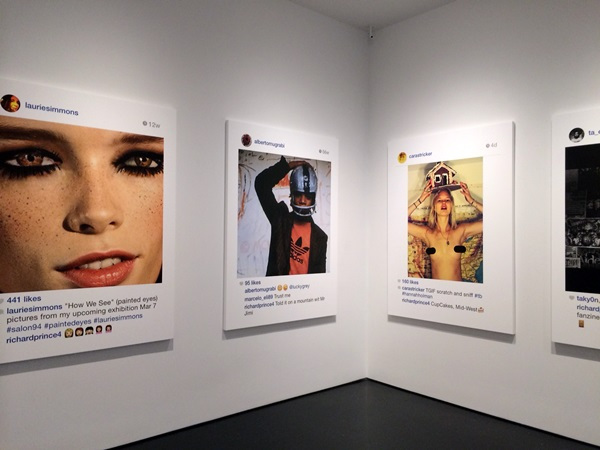When is it “okay” to steal art?

Prince’s show featured essentially a gallery of women’s Instagram photos.
March 1, 2019
Jerry Saltz, senior art critic for New York Magazine, once Instagrammed his own tweet storm on the topic of artist copyright. Don’t ask me how I came across this, because I probably couldn’t tell you. However, after a significant amount of time spent noodling over what Saltz had to say, my interpretation of his thesis is that all art is imitation in some form. He believes that artists should be allowed to use anything they want to make their art, and even profit from it. That being said, if your work is less than his expectations, you’ll get called out, at least by Saltz. Proof can be found in his critiques and in the details of his own artistic failings. But I think he’s saying imitation isn’t inherently wrong and that, done well, it can lead to original work.
In making that thesis though, he shines a green light on all stealing. Stop whining, he says. But isn’t it more nuanced than that? Is Urban Outfitters making T-shirts based on someone else’s drawing considered complete plagiarism? Or is Saltz saying it’s all fair game?
His reference to a 2014 Richard Prince art show (mentioned in his tweet) hints that’s exactly what he’s saying, so long as the “stealing” is done for art’s sake. But today, with capitalism (hehehe) and art so intimately linked, could such a distinction be made? Prince’s controversial show was essentially a gallery of women’s Instagram photos enlarged and hung up.
“As for [Prince] ‘stealing other people’s pictures,’ my view of an artist using other people’s Instagram pics is no different than an artist using any other material,” said Saltz. “By now, we have to agree that images, even digital ones, are materials, and artists use materials to do what they do. Period. In my way of thinking, too many artists are too wed to woefully outmoded copyright notions – laws that go against them in almost every case.”

Jerry Saltz criticized Prince’s controversial art show.
It’s true that the law disagrees with Saltz in some ways. As Art News explains, courts consider purpose, nature, sustainability and marketability when determining whether art has been appropriated illegally. The definition hasn’t changed in a long time, and the Internet has catalyzed a rise in copyright infringement lawsuits as a result.
I want to agree with Saltz because I appreciate that he knows more than I do about art (duh). But I can’t stop thinking about one word that’s missing from his rant: power. At what point does the power structure come into play? Doesn’t this anything-goes approach to art seem more realistic in a world devoid of power imbalances, much different from ours?
I wonder what role power plays in Saltz’s view of art. Art and commerce can only be separate in an ideal world. The reality is, it’s easier for some people to make money off their art than others. And that’s often because of an “unfair” playing field. Power matters, right?
So when does it become an artist’s responsibility to consider power imbalances when he or she steals, imitates, appropriates? If it is a choice between limiting an artist’s point of view (thus potentially making all art suffer) and stealing from another person, where is the line drawn?








